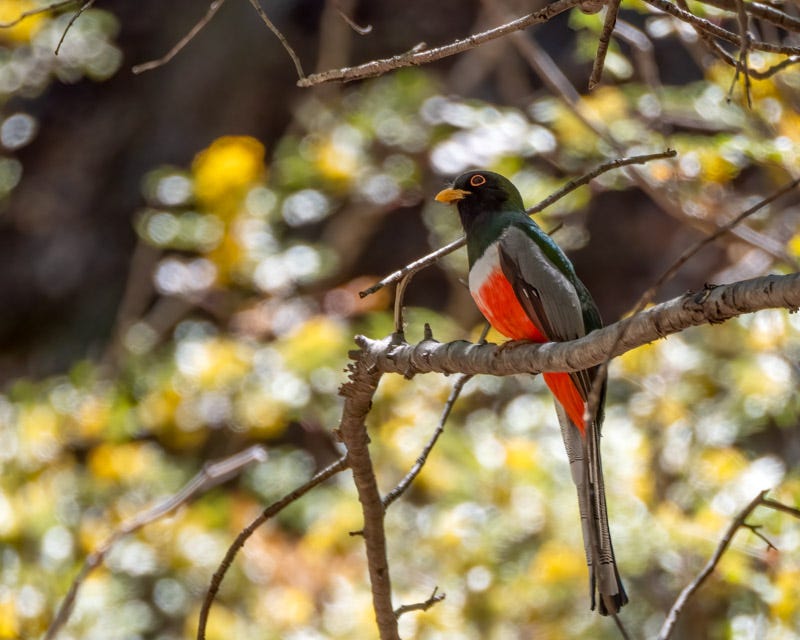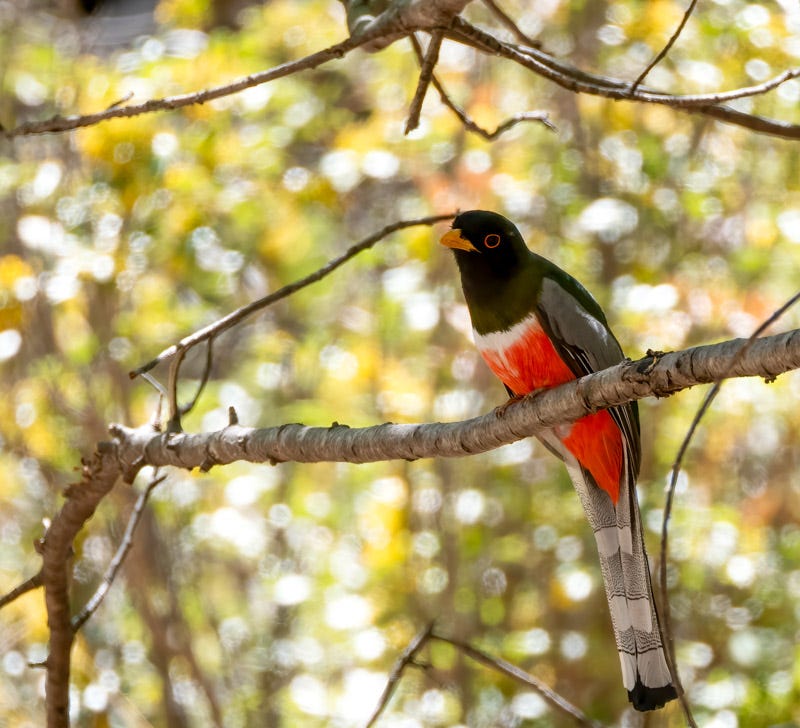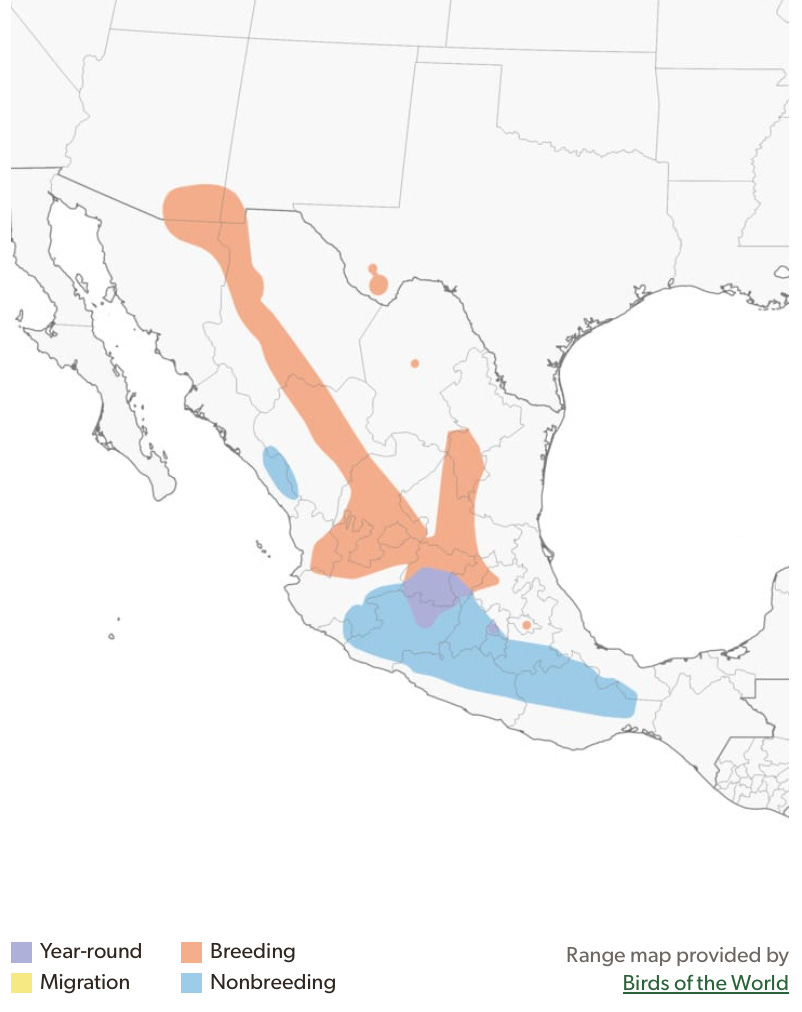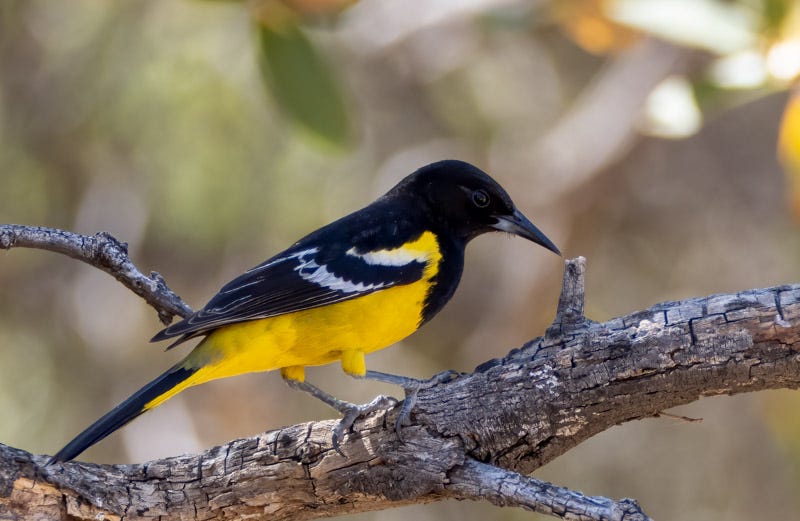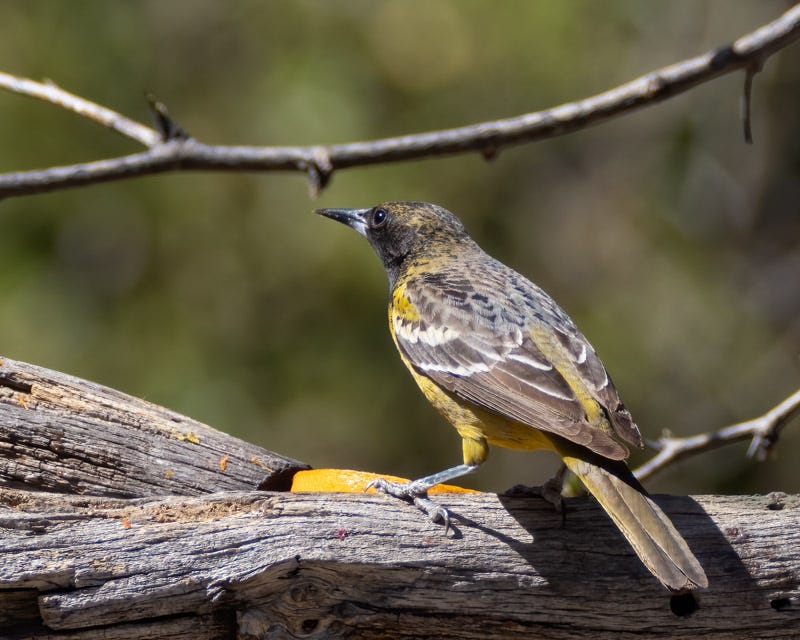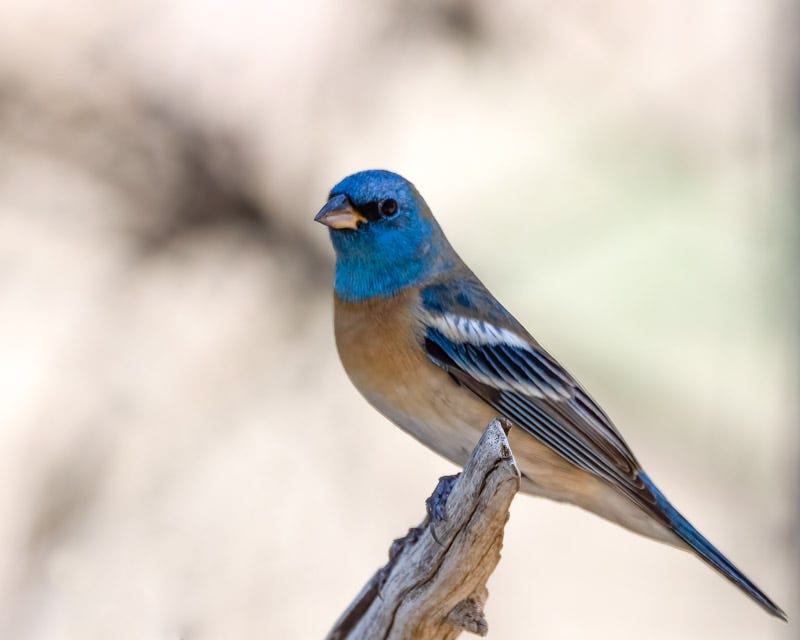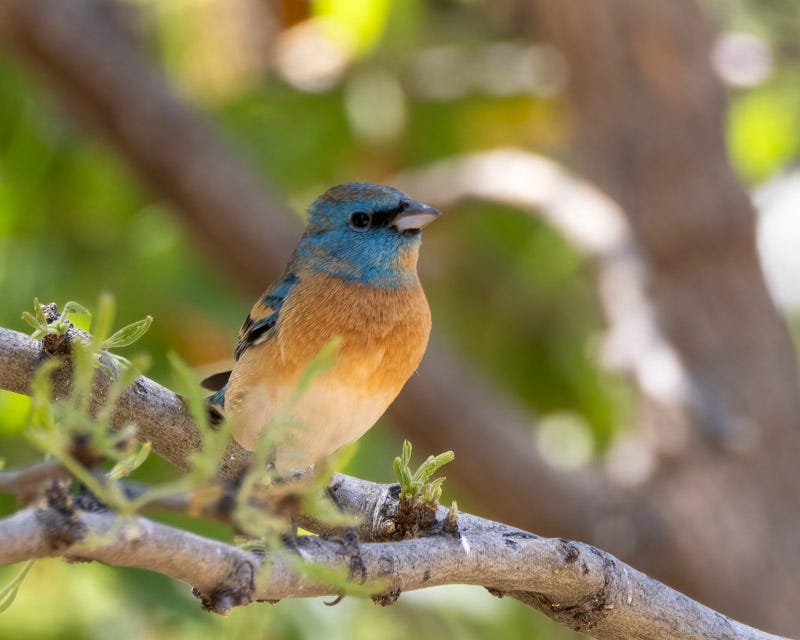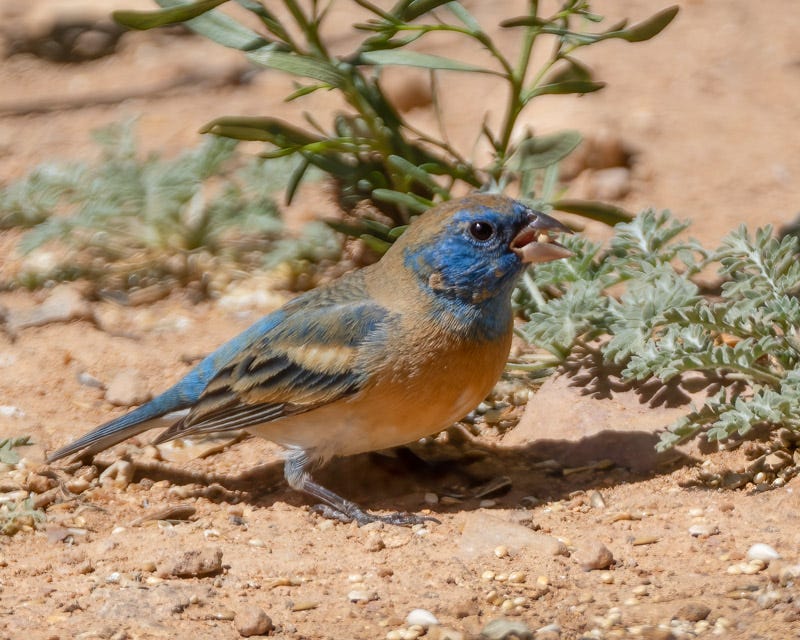The Huachuca Mountains
A weekend at Casa de San Pedro
Recently we spent a weekend at Casa de San Pedro, a very nice bed-and-breakfast south of Sierra Vista. It sits on the San Pedro River close to the border with Mexico and just a few miles from the Huachuca Mountains and the many bird friendly canyons on the eastern half of the Huachucas. On the way there we stopped for a nice walk in the Nature Conservancy's Ramsey Canyon Preserve. We were pleasantly surprised to see an Elegant Trogon.
Elegant Trogons can be found at this time of year in southeastern Arizona's canyon forests of oak and sycamore. They are a sought after bird and are not always easy to find. Birdnote has a wonderful piece on Elegant Trogons: https://www.birdnote.org/listen/shows/elegant-trogon
The range map lets you know that SE Arizona is the one place in the US where you may find Elegant Trogons during breeding season.
Another bird that shares the shady canyons of our Sky Islands is the Painted Redstart. This bird is often heard before it is seen. Its behavior is busy- constantly flicking its wings to scare insects while foraging along tree branches. Males and females look alike. I'm always struck by the white crescent under the Redstart's eyes and the combination of red, white and black feathers is very showy.
After leaving Ramsey Canyon, we drove south to the Ash Canyon Bird Sanctuary. Long a well known hotspot for birds, the Sanctuary is worth a visit by anyone at any time of year. https://sabo.org/ash-canyon-bird-sanctuary/ One of the special birds I was hoping to see there was the Lucifer Hummingbird. A highly sought after and rare bird, the Lucifer's has a curved bill, bright purple neck feathers (gorget) and long, narrow tail.
With its wintering and year-round range far south in Mexico, the Lucifer's Hummingbirds which summer in Arizona travel a long distance to get here.
One of the birds I was hoping and expecting to see was the Scott's Oriole. Scott's Orioles travel here from their winter homes in Central Mexico and Baja California and can be found in our high deserts. They are associated with yucca plants.
The male adult Scott's above looks different from the first-spring male Scott's Oriole below. It hatched last year and will not get its adult plumage until next summer, at age two. Its plumage is in-between that of an adult male and the more muted adult female. It is believed that this plumage reduces aggression from other adult males. Next summer it will have the bright yellow and black look of an adult male.
Another bird in abundance at Ash Canyon was the Lazuli Bunting. This male is in brilliant breeding plumage with its bright blue head, its "pumpkin colored" breast, and its white belly. Birdnote talks about these songbirds: https://www.birdnote.org/listen/shows/lazuli-bunting
Juvenile and non-breeding males have backs and heads that are more of a mottled tan and blue. Lazuli Buntings also seem to have a sloped forehead.
Lazuli Buntings can be seen during migration, moving from their wintering grounds in Mexico to their breeding grounds across the western states. In Arizona, they only breed in northern AZ. Lazuli Buntings eat both seeds and insects. You can see the brown neck and back of the head on this young male as he munches on a seed that has fallen from one of the birdseed feeders at Ash Canyon.
We spent many hours that weekend at Ash Canyon and were rewarded with quiet times in a bird-rich habitat that was very different from that of our Tucson desert foothills home.
Tucson Audubon’s annual Birdathon is now complete. Our team, called Birdies, Bogeys and Eagles, raised over $4,100 thanks to the generosity of many of you. Our recent donors include Pete G, Stephanie W, Sondra N, and Maria M. The Tucson Audubon Society has members worldwide. They do much to help to “Inspire people to enjoy and protect birds.” To learn more about what TAS does and how you may get involved, check out their website at
https://tucsonaudubon.org/


